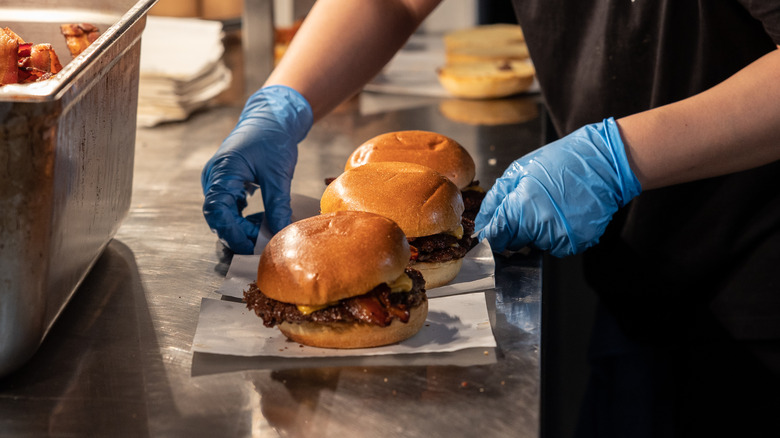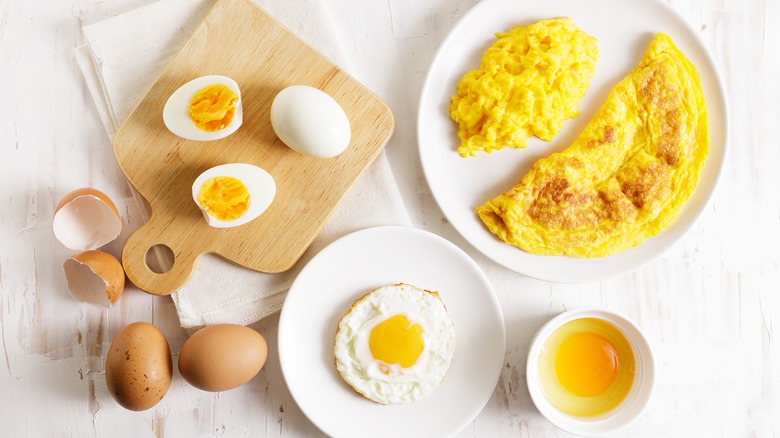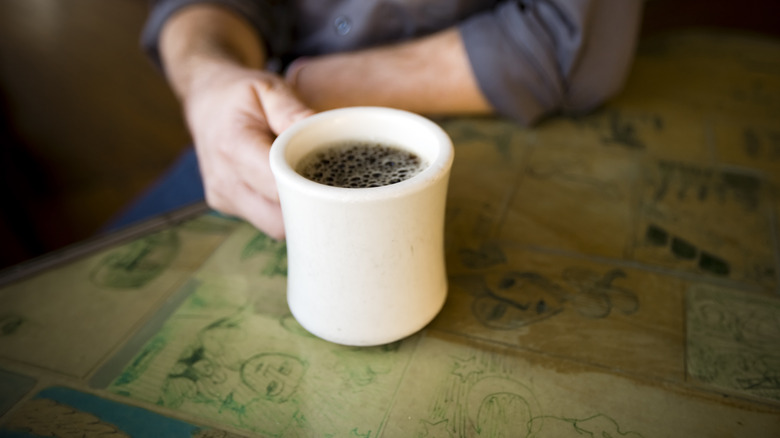Food Critics Are Praising 'Regular Person Food' As The Next Big Thing
At times, food media can be so cyclical that it's practically Sisyphean. Trend culture has the power to take something as banal as a cheeseburger, or as proverbially bananas as a gold leaf-wrapped steak, and regurgitate it all over your feed until people are so collectively sick of it, they flee to the farthest possible culinary antidote.
This is happening right now, and what's being rebelled against is the flashy decadence of 2022. After two years of lockdown, 2022 saw a boom in restaurants purporting to offer luxury in its most excessive form. Prices for dining out and drinking out rose, glamorous French and Italian restaurants rose and fell like empires on TikTok, and Resy gamified the reservation game to the point where planning brunch felt like gearing up for battle.
But the Age of Excess is over. Welcome to the Everyman Era. Because if the media is to be believed, the next great food trend is the culinary equivalent of normcore.
The simple joys of 'regular person food'
If someone asked you what the best meal you ever ate in your life was, it's possible that you might reference a Michelin-starred restaurant you once snagged a reservation at, or some trending croissant long since forgotten by most people. But it's more likely that you'd think back to something simple and sentimental, like Mom's roast chicken, or the sundae you used to order at your favorite childhood ice cream shop.
For most people, fine dining isn't a way of life, and the pressure put on food to taste good when you're paying exorbitant prices for it can take away from some of the enjoyment. Sometimes, all you really want is a hot dog or a bowl of canned tuna over rice. This kind of tension is explored in the hit culinary drama "The Bear," which sees a restaurant team trying to make haute cuisine against the backdrop of a greasy sandwich shop, the two elements clashing and melding unceasingly. Think about the scene in season 2 when Chef Sydney makes Sugar a potato chip omelet in the midst of preparing a — hopefully – Michelin-worthy tasting menu. There is real evidence, even in the media we consume, that after a year of decadence (with sky-high prices attached), people are being drawn back to simple foods heavy on nostalgia that make life easier, rather than more complex.
It's possible that this exposure to the grimy backstage of fancy schmancy restaurants triggered, or at least coincided with, a cultural swing away from "elevated" cuisine, and towards food that just tastes good, even if it doesn't have a three-month waitlist.
'Lo-fi bagels' and diner coffee
Food media has made an effort to tap into the needs of "normal people" over the last few years, ranking frozen Trader Joe's food items, or reimagining grocery store sugar cookies for modern times. But there is a level of appreciation for no-fuss, nostalgic restaurants that has been quietly creeping in for some time.
Eater published an entire spread of diner-related content, celebrating things as unremarkable as scrapple, disco fries, and coffee in white ceramic mugs. Restaurants like Bad Roman, Thai Diner, and Press Club Grill are embracing the comfort of kitsch, serving items like macaroni with ranch or $20 tater tots, which might be nicely plated but are still familiar, harkening back to simpler times. And Bon Appétit recently earned a certain amount of internet ire for espousing the pleasures of Panera's "lo-fi" bagels.
This movement is even mirrored sardonically in the "White People Food" trend in China, in which Chinese workers have co-opted simple American-and-European-inspired lunches like ham sandwiches and lunchable-style Tupperware meals of cheese, meat, and veggies.
So don't be surprised if the next year looks more like hot dogs and funfetti cake than caviar bumps and $30 cacio e pepe.



